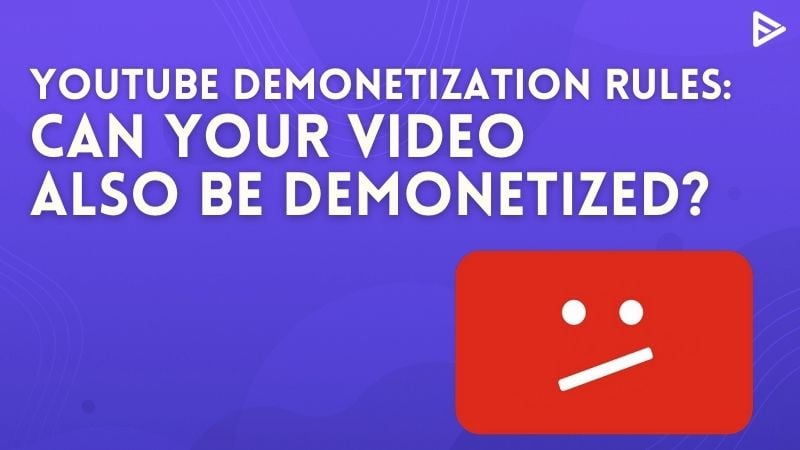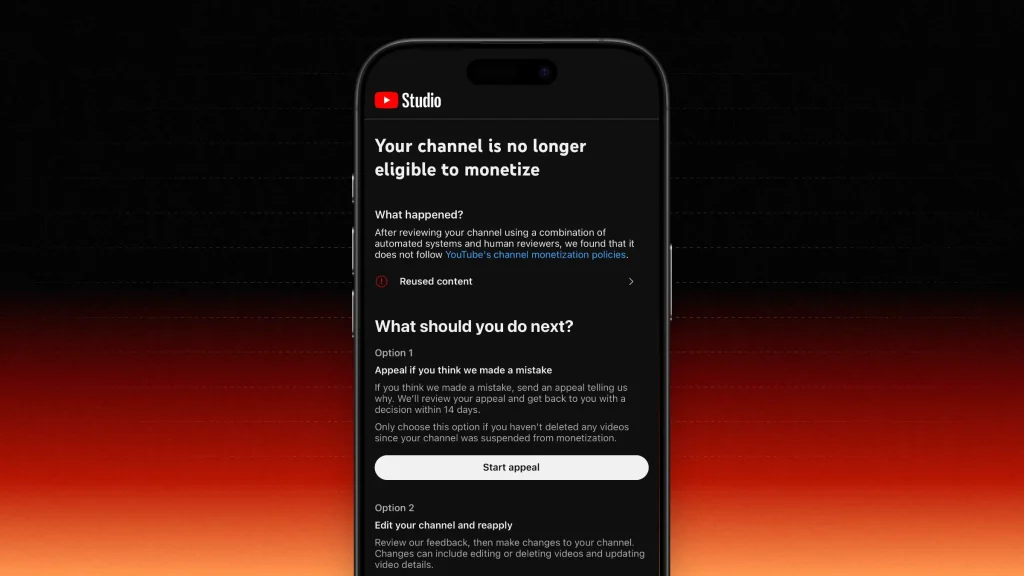YouTube’s tightening monetization rules could spell the end for reaction videos, as creators face demonetization and uncertain futures.

As YouTube continues to dominate the world of content creation, one genre of videos is finding itself in hot water — reaction videos.
For years, reaction channels have become a mainstay of the platform, captivating millions of viewers as creators respond to music videos, viral trends, movie trailers, and much more.
These videos have allowed YouTubers to build loyal communities and lucrative careers. But now, many of these creators are facing an uncertain future, as stricter policies regarding monetization threaten to silence some of the most popular content creators.
With increased scrutiny over copyright issues, the revenue streams for reaction channels are being disrupted, leaving creators and viewers alike concerned about the future of this genre.
The controversy began as YouTube started cracking down on copyrighted material being used without proper licensing.
Reaction videos, by their very nature, often incorporate elements of existing content, such as clips from music videos, TV shows, or movies, with creators offering commentary or emotional responses to the material.
For years, this format has been deemed “fair use,” allowing creators to generate significant views and ad revenue.
However, the definition of fair use has become increasingly murky, with YouTube’s stricter guidelines now putting creators at risk of demonetization, even when their content is transformative in nature.
This situation has created a wave of anxiety within the YouTube community, as creators now face the possibility of losing their primary source of income.
Many reaction channel owners have already voiced their frustration on social media, where they fear their hard work is being undermined by the platform’s lack of clarity on what constitutes fair use.
While some creators have shifted their content strategy, exploring alternative formats or reducing their reliance on reaction videos, many remain fearful of what the future holds.
This growing uncertainty has prompted calls for clearer rules from YouTube, allowing creators to better understand what is acceptable within the bounds of copyright law.

As the discussion heats up, it is important to consider the broader implications for both creators and viewers. For creators, the potential loss of monetization could have serious financial consequences, forcing them to reconsider the type of content they produce.
Without the ability to generate revenue from ads, many will be forced to scale back their work or abandon their channels entirely.
For viewers, the loss of beloved reaction channels would result in a more homogenized content landscape, where variety and personal expression are stifled.
With reaction videos being one of the most engaging and interactive forms of content on YouTube, losing them would mean a less diverse and engaging viewing experience for fans.
While the changes in YouTube’s policies may seem like a challenge, some creators are taking proactive steps to better understand the legalities behind their content.
Workshops, online courses, and community forums have emerged as valuable resources to help content creators educate themselves about copyright laws and fair use.
This shift towards self-education reflects the growing awareness within the YouTube community that understanding the legal landscape is crucial to maintaining a successful channel.
It is also an effort to ensure that creators can continue producing the content that their audiences love without facing potential legal consequences.
The involvement of the audience also plays a key role in this developing story. Many fans have expressed their concerns about the potential loss of reaction videos and have voiced their support for creators who may be struggling with demonetization.
The relationship between creators and viewers is often one of mutual support, with fans sharing videos, leaving comments, and subscribing to channels that they enjoy.
In times like these, when creators face financial difficulties, the support of their audience can make a significant difference in helping them weather the storm.
Additionally, viewers can play an important part in pushing for a more transparent and fair approach to YouTube’s policies, advocating for their favorite creators and ensuring that their voices are heard.

Despite the challenges, the situation presents an opportunity for growth and adaptation in the YouTube content creation ecosystem.
If YouTube can find a way to strike a balance between protecting intellectual property and allowing creators the freedom to engage with existing content, the platform could emerge even stronger.
Reaction channels, along with other forms of creative content, can continue to thrive if clearer guidelines are established, offering both creators and viewers the security they need to move forward.
As YouTube faces mounting pressure to revise its policies on copyright and fair use, the future of reaction videos remains uncertain.
For now, creators are left navigating a shifting landscape, wondering if they can continue to produce the content that has made them successful or if they’ll have to evolve in ways that compromise their creativity.
One thing is clear: the growing tension between YouTube’s monetization rules and the creativity of its content creators is a battle that will have long-lasting effects on the platform.
Whether reaction videos will remain a staple of YouTube or gradually fade away remains to be seen, but the outcome will undoubtedly shape the direction of content creation for years to come.
News
Federico Jiménez Losantos Explota Contra Barbie Gaza: “¡Qué Asquerosa!”
Federico Jiménez Losantos arremete duramente contra Barbie Gaza tras sus polémicas declaraciones sobre las violaciones durante la masacre del 7…
El juez Peinado lanza una bomba contra RTVE: Querella por injurias y calumnias
Juan Carlos Caballero confrontó a la presentadora Silvia Intxaurrondo en TVE, acusándola de priorizar la crítica política sobre la información…
Juan Carlos Caballero deja en evidencia a Silvia Intxaurrondo en TVE: “La televisión pública debe informar, no manipular”
Juan Carlos Caballero confrontó a la presentadora Silvia Intxaurrondo en TVE, acusándola de priorizar la crítica política sobre la información…
Ada Colau, Aterrorizada por las Amenazas de Israel: “Solo Quiero Volver a Casa”
Ada Colau, exalcaldesa de Barcelona, participa en la flotilla humanitaria Global Sumud hacia Gaza, pero confiesa sentirse aterrorizada por posibles…
¡Cita Explosiva en First Dates: La Estrategia de Seducción que Dejó a Todos Boquiabiertos!
Pablo, un striper de 20 años, protagonizó una cita muy atrevida y provocadora con Naquiolis, de 34 años, en “First…
😱 ¡Increíble Cita en First Dates! Carlos Sobera Interviene por un Motivo Sorprendente
Durante una cita en First Dates, Pedro, un hombre de 72 años, y Maribel, una mujer más joven, protagonizaron situaciones…
End of content
No more pages to load












